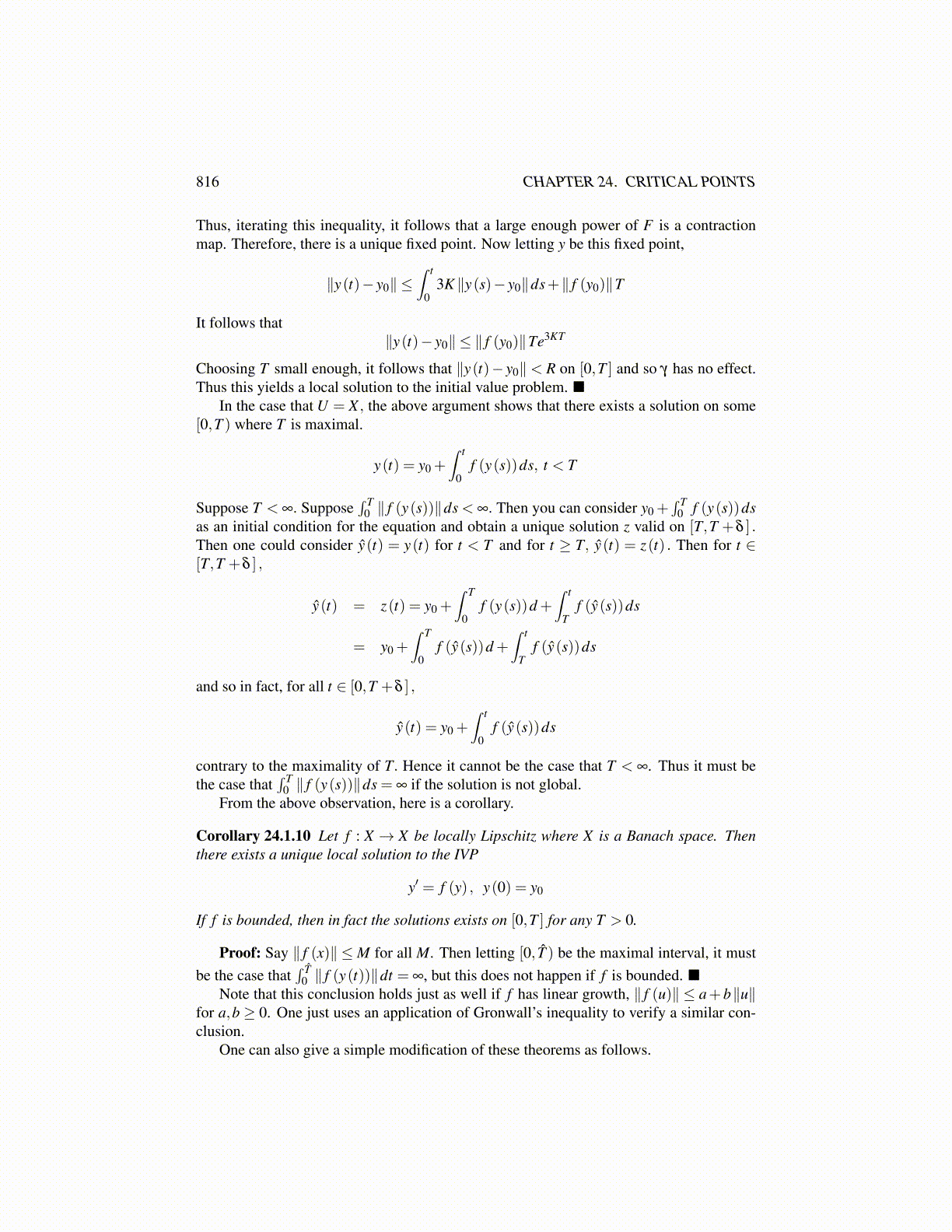
816 CHAPTER 24. CRITICAL POINTS
Thus, iterating this inequality, it follows that a large enough power of F is a contractionmap. Therefore, there is a unique fixed point. Now letting y be this fixed point,
∥y(t)− y0∥ ≤∫ t
03K ∥y(s)− y0∥ds+∥ f (y0)∥T
It follows that∥y(t)− y0∥ ≤ ∥ f (y0)∥Te3KT
Choosing T small enough, it follows that ∥y(t)− y0∥< R on [0,T ] and so γ has no effect.Thus this yields a local solution to the initial value problem.
In the case that U = X , the above argument shows that there exists a solution on some[0,T ) where T is maximal.
y(t) = y0 +∫ t
0f (y(s))ds, t < T
Suppose T < ∞. Suppose∫ T
0 ∥ f (y(s))∥ds < ∞. Then you can consider y0 +∫ T
0 f (y(s))dsas an initial condition for the equation and obtain a unique solution z valid on [T,T +δ ] .Then one could consider ŷ(t) = y(t) for t < T and for t ≥ T, ŷ(t) = z(t) . Then for t ∈[T,T +δ ] ,
ŷ(t) = z(t) = y0 +∫ T
0f (y(s))d +
∫ t
Tf (ŷ(s))ds
= y0 +∫ T
0f (ŷ(s))d +
∫ t
Tf (ŷ(s))ds
and so in fact, for all t ∈ [0,T +δ ] ,
ŷ(t) = y0 +∫ t
0f (ŷ(s))ds
contrary to the maximality of T. Hence it cannot be the case that T < ∞. Thus it must bethe case that
∫ T0 ∥ f (y(s))∥ds = ∞ if the solution is not global.
From the above observation, here is a corollary.
Corollary 24.1.10 Let f : X → X be locally Lipschitz where X is a Banach space. Thenthere exists a unique local solution to the IVP
y′ = f (y) , y(0) = y0
If f is bounded, then in fact the solutions exists on [0,T ] for any T > 0.
Proof: Say ∥ f (x)∥ ≤M for all M. Then letting [0, T̂ ) be the maximal interval, it mustbe the case that
∫ T̂0 ∥ f (y(t))∥dt = ∞, but this does not happen if f is bounded.
Note that this conclusion holds just as well if f has linear growth, ∥ f (u)∥ ≤ a+b∥u∥for a,b ≥ 0. One just uses an application of Gronwall’s inequality to verify a similar con-clusion.
One can also give a simple modification of these theorems as follows.